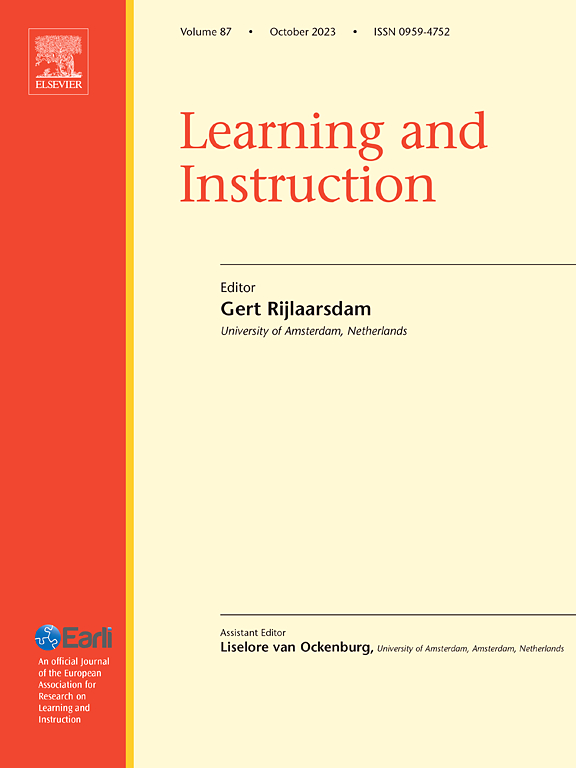The effects of interactions with AI-enhanced media characters on learning computational thinking
IF 4.9
1区 教育学
Q1 EDUCATION & EDUCATIONAL RESEARCH
引用次数: 0
Abstract
Background
Computational thinking (CT) is a crucial domain for children to develop in their early years. To increase children's access to CT learning resources, educational programs like PBS KIDS “Lyla in the Loop” have been developed to incorporate CT concepts through narrative structures where characters solve problems using the CT cycle. However, children need explicit guidance to effectively process both educational and narrative content. Engaging children in dialogues that connect educational content with the narrative has proven to enhance comprehension.
Aims
This study explores the effectiveness of using AI to enable this type of dialogues between children and a media character, supporting children in learning CT by connecting these concepts with everyday situations in “Lyla in the Loop.”
Method
Through a between-subject randomized control study with 160 children aged four to eight, we will compare children's learning and applications of CT concepts as well as narrative comprehension from AI-assisted dialogues to those who watched the broadcast version of the show without such dialogues. The study also examines the role of children's cognitive abilities and prior CT knowledge in their learning from the show, with or without AI-assisted dialogues.
Expected results
The findings could enhance our understanding of AI-based scaffolding strategies in children's media and offer practical implications for improving children's learning experiences.
与人工智能增强的媒体角色互动对学习计算思维的影响
计算思维(CT)是儿童早期发展的关键领域。为了增加儿童获得CT学习资源的机会,像PBS KIDS“Lyla in the Loop”这样的教育节目已经开发出来,通过叙事结构将CT概念融入其中,其中角色使用CT循环解决问题。然而,儿童需要明确的指导才能有效地处理教育和叙事内容。事实证明,让儿童参与将教育内容与叙事联系起来的对话可以提高理解能力。本研究探讨了使用人工智能实现儿童与媒体角色之间的这种对话的有效性,通过将这些概念与“Lyla in the Loop”中的日常情况联系起来,支持儿童学习CT。方法通过对160名4 - 8岁儿童的随机对照研究,比较人工智能辅助对话与观看直播版节目的儿童对CT概念的学习和应用,以及对叙事的理解。该研究还研究了儿童的认知能力和先前的CT知识在他们从节目中学习的作用,无论是否有人工智能辅助对话。预期结果本研究结果可以加深我们对儿童媒体中基于人工智能的脚手架策略的理解,并为改善儿童的学习体验提供实际意义。
本文章由计算机程序翻译,如有差异,请以英文原文为准。
求助全文
约1分钟内获得全文
求助全文
来源期刊

Learning and Instruction
Multiple-
CiteScore
11.30
自引率
4.80%
发文量
109
期刊介绍:
As an international, multi-disciplinary, peer-refereed journal, Learning and Instruction provides a platform for the publication of the most advanced scientific research in the areas of learning, development, instruction and teaching. The journal welcomes original empirical investigations. The papers may represent a variety of theoretical perspectives and different methodological approaches. They may refer to any age level, from infants to adults and to a diversity of learning and instructional settings, from laboratory experiments to field studies. The major criteria in the review and the selection process concern the significance of the contribution to the area of learning and instruction, and the rigor of the study.
 求助内容:
求助内容: 应助结果提醒方式:
应助结果提醒方式:


